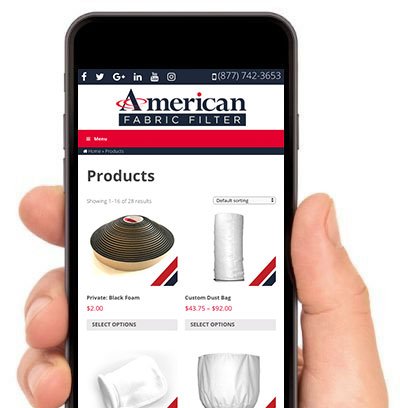
Struggling to turn website visitors into valuable leads with an underperforming design? Transforming your website for digital marketing triumph means weaving in strategic layouts, user-focused features, and SEO-powered semantics to drive tangible results. This comprehensive guide will unveil the crucial design elements that amplify performance, how to harmonize design with your marketing blueprint, cutting-edge semantic SEO tactics, frameworks for ongoing monitoring and updates, best practices for internal linking, common pitfalls to sidestep, and actionable first steps to kickstart your journey. By implementing these strategies—and tapping into the expertise of The Visual Realm – Digital Marketing Agency—you’ll forge a conversion-optimized site built to scale with your ambitions.
What Are the Core Website Design Elements That Supercharge Digital Marketing Results?
The essential website design elements form the bedrock of visitor engagement, brand perception, and conversion success. By masterfully blending intuitive navigation, crystal-clear calls-to-action, adaptable layouts, and captivating visuals, you cultivate a digital ecosystem where prospects linger, explore more deeply, and convert more readily.
To truly grasp how these elements synergize, consider these pivotal design factors:
- Champion intuitive navigation to smooth out user journeys and steer visitors toward conversion objectives.
- Deploy lightning-fast, responsive layouts to sustain engagement across every device.
- Emphasize prominent calls-to-action using high-contrast colors and strategic placement.
- Maintain unwavering brand consistency—fonts, color palettes, imagery—to build robust trust.
- Refine content hierarchy and readability to bolster both SEO and user comprehension.
These components work in unison to elevate user satisfaction and search engine visibility, paving the way for deeper strategic alignment and advanced semantic SEO enhancements.
How Does Responsive Design Amplify User Engagement and SEO?

Responsive design intelligently adjusts page layouts and employs media queries to perfectly fit each device’s screen dimensions, ensuring a flawless user experience and optimal load speeds. This directly translates to heightened engagement signals and superior search rankings. When layouts fluidly transition between desktop, tablet, and mobile, users enjoy seamless navigation and content presentation. This design paradigm significantly reduces bounce rates and boosts pages per session, while Google’s mobile-first indexing actively rewards sites that prioritize cross-device performance. Understanding responsive design’s profound impact on crawlability and Core Web Vitals naturally leads us to explore the next critical factor: user experience.
The Profound Impact of Responsive Web Design on User Engagement and Conversion Rates
Responsive web design has cemented its status as a cornerstone of contemporary web development, empowering websites to adapt flawlessly to a diverse array of devices and screen sizes. At Zultr LLC, we deeply appreciate the pivotal role responsive design plays in elevating user experience and driving conversions. Here’s why responsive web design is indispensable and how it can profoundly benefit your business.
This research powerfully underscores the article’s focus on responsive design and rapid load times as indispensable elements for boosting digital marketing performance and deepening user engagement.
Why Is User Experience (UX) Absolutely Critical for Digital Marketing Success?

User experience (UX) fundamentally shapes how visitors perceive and interact with your site by optimizing for clarity, accessibility, and effortless task completion. This, in turn, dramatically elevates engagement and conversion metrics. A streamlined UX minimizes cognitive load through crystal-clear information architecture, logical user flows, and accessible design patterns. For instance, logically grouping related services under intuitive categories empowers prospects to swiftly discover the solutions they need. Focusing on subtle micro-interactions—like responsive hover states, informative feedback animations, and clear progress indicators—builds confidence and encourages deeper exploration, setting the stage to examine the vital role of visual elements and branding.
What Crucial Role Do Visual Elements and Branding Play in Website Effectiveness?
Visual elements and branding forge an immediate emotional connection, setting your site apart from the competition. They achieve this by harmonizing color psychology, typography, and imagery to powerfully express your brand’s unique identity, fostering recognition and cultivating lasting loyalty. Consistent application of brand colors and logo placement across all key touchpoints reinforces memory recall, while high-caliber hero images and cohesive icon sets artfully direct attention to your core value propositions. Visual hierarchy—achieved through strategic contrast and judicious use of whitespace—guides visitors toward desired actions and amplifies message clarity. Recognizing these fundamental branding mechanics provides the essential context for aligning design with your broader marketing strategies.
How Can You Seamlessly Align Website Design with Your Digital Marketing Strategy?
Aligning website design with your digital marketing strategy ensures that every visual and structural decision actively supports your overarching campaign objectives, crafting a unified customer journey that drives leads and sales. By embedding marketing goals directly into your design blueprint—such as optimizing for lead capture, promoting key content, and solidifying brand positioning—you guarantee seamless consistency between your ad creatives, landing pages, and on-site user experiences.
| Design Feature | Marketing Attribute | Impact |
|---|---|---|
| Dedicated Landing Pages | Campaign Conversion Tracking | Sharpens ROI analysis |
| Promotional Hero Banners | Seasonal Offer Visibility | Boosts click-through rates |
| Integrated Lead Forms | Data Collection Efficiency | Streamlines follow-up workflows |
| Sticky Navigation Bars | Continuous Brand Exposure | Extends session duration |
| Interactive Chat Widgets | Real-Time Engagement | Accelerates lead qualification |
This alignment table vividly illustrates how specific design features directly map to critical marketing needs, forging a cohesive framework that informs every design decision.
Which Website Features Are Essential for Driving Lead Generation and Conversions?
Interactive lead-capture features simplify the process for prospects to express interest by seamlessly integrating data collection points directly into the user experience, significantly boosting conversion rates.
- Deploy engaging pop-up or slide-in forms with compelling prompts to capture essential email and contact details.
- Offer valuable gated content downloads—such as insightful whitepapers or compelling case studies—to exchange value for qualified leads.
- Integrate live chat or intelligent chatbot widgets to provide instant answers and expertly guide prospects.
- Utilize exit-intent overlays that present timely, targeted offers just before a visitor departs.
- Implement dynamic countdown timers on promotional banners to create a sense of urgency and motivate immediate action.
By strategically incorporating these features, you effectively transform passive browsers into actively engaged leads, establishing a fluid pathway into your content architecture strategies.
How Can You Leverage Content Architecture to Elevate the User Journey and SEO?
Effective content architecture meticulously organizes pages and posts into a logical hierarchy, guiding users from broad overviews to granular insights while simultaneously reinforcing search engine relevance. A well-structured table of contents, intuitive breadcrumb navigation, and robust pillar-cluster page models clearly delineate relationships between topics, aiding both visitors and search engines in understanding your site’s intricate information network.
| Content Section | Structural Component | SEO Benefit |
|---|---|---|
| Homepage | Pillar Page | Establishes foundational domain authority |
| Service Category Pages | Cluster Topic | Enhances topical authority and relevance |
| Blog Articles | Internal Linking Network | Distributes link equity and reduces bounce rates |
| Resource Library | Faceted Filters | Deepens crawl depth and user exploration |
| FAQ Page | Schema-Enabled Sections | Boosts eligibility for featured snippets |
This content architecture model powerfully demonstrates how thoughtful structuring enhances navigability, supports thematic depth, and optimizes performance for semantic search.
What Are the Premier Best Practices for Integrating Calls-to-Action (CTAs)?

High-impact CTAs inspire immediate action by combining persuasive language with striking visual contrast and strategic placement, effectively guiding users to the next crucial step in the conversion funnel.
- Position primary CTAs prominently above the fold, employing action-oriented labels like “Download Your Free Guide” or “Request a Personalized Analysis.”
- Utilize secondary CTAs—such as “Discover More” or “Explore Our Services”—within contextual areas to nurture interest without causing overwhelm.
- Ensure each page features a singular, clearly defined CTA to prevent decision fatigue and maintain absolute clarity.
Optimizing CTAs in this manner transforms passive design elements into potent conversion triggers, perfectly priming your site for continuous improvement.
What Are the Top Semantic SEO Techniques to Elevate Your Website Design?
Semantic SEO techniques enrich your website design by embedding meaningful entity relationships and structured markup, making your content profoundly understandable to search engines and significantly improving visibility for relevant queries. These advanced methods transcend simple keyword placement to construct a cohesive knowledge graph that precisely aligns with user intent and sophisticated search algorithms.
- Define explicit entity attributes—such as detailed product specifications, key service features, and impactful case study outcomes—to forge stronger topic associations.
- Apply semantic triples within your copywriting to clearly articulate entity relationships (e.g., “YourBrand accelerates ROI by implementing bespoke user experiences”).
- Implement on-page structured data markup wherever applicable, enhancing eligibility for rich results and valuable Knowledge Panel features.
These sophisticated semantic techniques ensure your site communicates its unique value proposition with unparalleled clarity to both your audience and search engines.
Harnessing Semantic SEO and Structured Data for Superior Search Visibility
Semantic SEO, which zeroes in on the nuanced meaning and context behind user queries, coupled with structured data (Schema Markup), dramatically amplifies a website’s search visibility and refines the user experience. By explicitly connecting entities and providing rich contextual information, structured data empowers search engines to grasp content more effectively, leading to elevated rankings, increased impressions, and higher click-through rates.
This citation powerfully validates the article’s section on semantic SEO techniques, emphasizing how entity attributes and structured data significantly enhance search engine comprehension and content relevance.
How Do Entity Attributes and Structured Data Elevate Search Visibility?
Entity attributes meticulously describe distinct characteristics—such as the scope of services, specific pricing tiers, or measurable performance metrics—that search engines leverage to categorize and present content within rich snippets. By tagging these attributes with structured data, you unlock enhanced search features like star ratings, FAQ sections, and detailed event information. For example, clearly marking up “ServicePlan” and “Price” signals the precise relationship between your offerings and their cost to Google, boosting visibility in transactional search queries. Establishing precise entity definitions forms the essential foundation for implementing semantic triples throughout your content.
What Are Semantic Triples and How Do They Optimize Content Relevance?
Semantic triples adhere to the precise structure of Entity → Relationship → Entity to articulate clear, machine-readable knowledge connections. For instance, “The Visual Realm drives lead generation by integrating custom website designs” explicitly links your brand to its core service outcome. These triples signal to search engines the intricate interrelations between concepts, significantly enhancing topical relevance and increasing the likelihood of appearing in niche query results. Crafting sentences that consistently incorporate explicit triples throughout your copy builds a powerful and robust knowledge graph for your website.
How to Implement Schema Markup for Digital Marketing Websites?
Implementing schema markup involves carefully selecting the most relevant schema types—such as Organization, WebPage, BreadcrumbList, and Service—and then meticulously adding the corresponding attributes to your HTML. Begin by defining your “Organization” with your business name, logo, and essential contact data. Subsequently, apply “WebPage” markup to your key pages, specifying the headline, description, and publication date. Finally, utilize “Service” schema to detail each marketing offering, including crucial attributes like serviceType and areaServed. Proper implementation dramatically elevates your site’s presentation in search results and significantly supports eligibility for featured snippets.
How Can You Consistently Monitor and Update Your Website Design for Sustained Digital Marketing Success?
Continuously monitoring and updating your website design ensures ongoing performance enhancements, adapts to evolving user behaviors, and maintains a distinct competitive advantage. By strategically leveraging analytics platforms, incorporating feedback loops, and conducting regular design audits, you can effectively iterate on design elements and semantic structures to optimize both user engagement and search visibility.
What Tools Are Indispensable for Tracking Website Performance and User Behavior?
Comprehensive performance tracking necessitates a synergistic combination of analytics, heatmapping, and A/B testing tools to capture both quantitative and qualitative user data:
- Google Analytics delivers critical insights into traffic sources, user flow patterns, and conversion metrics.
- Hotjar or Crazy Egg generate detailed heatmaps and session recordings to reveal intricate interaction patterns.
- Optimizely or VWO provide robust platforms for A/B testing, enabling continuous design experimentation.
Integrating these powerful tools equips you with actionable intelligence on visitor behavior, guiding precise design refinements and strategic semantic adjustments.
How Frequently Should You Update Your Website Design to Remain Competitive?
Updating your website design at a minimum of twice annually ensures it remains perfectly aligned with current brand messaging, prevailing UX trends, and the latest SEO algorithm updates. Minor adjustments—such as refreshing hero banners, optimizing CTAs, and revalidating structured data—can be implemented quarterly, while comprehensive redesigns are best scheduled every 12–18 months. This strategic cadence strikes an ideal balance between embracing innovation and maintaining stability, allowing you to test enhancements incrementally while safeguarding established performance gains.
What Are Effective Strategies for Tracking Semantic Entities?
Tracking semantic entities involves diligently monitoring keyword clusters, observing entity co-occurrence patterns, and analyzing featured snippet placements using advanced SEO platforms like SEMrush or Ahrefs. Establish custom reports to promptly flag shifts in entity-related rankings and identify emerging query opportunities. Regularly review your structured data diagnostics within Google Search Console to swiftly correct markup errors and reinforce entity definitions, ensuring your knowledge graph remains robust and perpetually up-to-date.
Which Internal Linking and Navigation Strategies Elevate Website Usability and SEO?
Strategic internal linking and thoughtfully designed navigation distribute authority effectively, guide users seamlessly through your content network, and enhance crawl efficiency. When you artfully link between related pages using descriptive anchor text, you reinforce semantic relationships and significantly boost overall site discoverability.
How Does Internal Linking Powerfully Support SEO and User Experience?
Internal linking bolsters SEO by intelligently passing link equity to high-value pages and empowers users to discover deeper information effortlessly, encouraging extended sessions and ultimately driving more conversions. By employing keyword-rich anchor text that accurately reflects the target page’s topic—such as linking “lead-generation best practices” to a dedicated resource page—you establish clear semantic pathways that search engines follow to comprehend your site’s structure. Effective internal linking also proactively reduces orphan pages and strengthens topical clusters.
What Navigation Designs Enhance Visitor Retention and Conversion Rates?
Navigation designs that prioritize absolute clarity and effortless accessibility significantly improve visitor retention by enabling users to locate desired information with minimal cognitive effort. Mega-menus logically group related categories under clear headings, faceted filters allow for deep exploration of product attributes, and persistent sticky headers provide constant access to key site sections. These sophisticated designs drastically reduce search friction and keep visitors deeply engaged, leading directly to higher conversion rates and diminished bounce rates.
How to Use Anchor Text Effectively for Maximum Semantic Relevance?
Employing concise, descriptive anchor text ensures that links precisely convey topic relationships, thereby enhancing both user comprehension and search engine context scoring. Opt for terms that directly mirror the linked page’s focus—such as “digital marketing website audit” or “responsive UX checklist”—rather than generic phrases. These carefully chosen anchors serve as powerful semantic cues, reinforcing entity connections across your entire content network and significantly boosting relevance for targeted queries.
What Are Common Website Design Mistakes That Undermine Digital Marketing Success?
Sidestepping common design missteps is crucial for safeguarding your marketing ROI by preventing the loss of valuable leads, mitigating high bounce rates, and avoiding detrimental search visibility issues. Recognizing these potential pitfalls early empowers you to implement timely corrective actions that preserve and enhance performance gains.
Why Do Slow Load Times Cripple Marketing Effectiveness?
Excessively slow load times severely degrade the user experience by dramatically increasing abandonment rates and signaling poor performance to search engines, which consequently downgrade search rankings. Bloated image sizes, unoptimized code, and a lack of effective caching mechanisms introduce frustrating delays that alienate visitors. Directly addressing these performance bottlenecks leads to improved Core Web Vitals scores and reduced page exit rates, fostering a smoother, more efficient path to conversion.
How Can Inadequate Mobile Optimization Devastate Your Marketing ROI?
Subpar mobile optimization creates significant barriers for the majority of visitors who browse on smartphones, resulting in navigation difficulties, content clipping, and problematic touch-target interactions that erode user trust. When forms become cumbersome to complete or menus render improperly, prospects often abandon tasks before achieving conversion. Ensuring a mobile-first design approach rectifies these critical barriers and maximizes engagement on the most prevalent browsing devices.
What Design Flaws Invariably Lead to High Bounce Rates?
Prevalent design flaws—such as cluttered layouts, ambiguous value propositions, and intrusive pop-ups—actively deter users from exploring further, thereby increasing immediate exits. Misaligned headings, conflicting color schemes, and inconsistent branding generate confusion and diminish credibility. Rectifying these issues by streamlining content flow, clarifying core messaging, and respecting user attention fosters deeper engagement and significantly lowers bounce rates.
How Do You Strategically Get Started with Transforming Your Website Design for Marketing Success?
Initiating a website design transformation demands meticulous, structured planning, the selection of the right toolset, and expert support to guarantee strategic execution from the initial concept through to the final launch. By diligently following defined steps and leveraging specialized resources, you can navigate the redesign process with unwavering confidence.
What Are the Essential First Steps in a Website Redesign for Digital Marketing?
Begin by conducting a comprehensive audit of your current performance metrics, gathering user feedback, and analyzing competitor benchmarks to pinpoint existing strengths and critical gaps. Clearly define your primary marketing objectives—such as increasing lead volume or achieving higher SEO rankings—and translate these into specific design requirements. Develop wireframes that meticulously map out customer journeys and draft a sitemap that aligns perfectly with your content architecture goals, establishing a clear and actionable roadmap for the entire redesign phase.
How to Select the Optimal Design Tools and Platforms?
Choosing the right design tools and platforms hinges on your project’s scope, your team’s existing expertise, and your future scalability requirements. Content management systems like WordPress or HubSpot offer extensive plugin ecosystems for seamless SEO and marketing automation, while intuitive page builders such as Elementor or Webflow provide exceptional visual editing flexibility. Critically evaluate each option’s integration capabilities with your analytics and CRM systems to ensure flawless data flow and facilitate future optimization efforts.
What Support and Resources Are Available for Website Transformation Projects?
Engage with specialized agencies or seasoned consultants—such as the experts at The Visual Realm – Digital Marketing Agency—to expertly supplement your in-house capabilities with specialized design, development, and SEO expertise. Access a wealth of knowledge through online communities, comprehensive tutorial platforms, and extensive documentation libraries for continuous learning. Furthermore, subscribe to leading industry newsletters and attend relevant webinars focused on emerging UX trends, critical semantic SEO updates, and proven conversion rate optimization techniques to stay at the forefront of best practices.
Embarking on a strategic design transformation lays the essential groundwork for enduring digital marketing success by harmonizing aesthetics, functionality, and SEO-driven semantics.
Redesigning your website transforms it into an exceptionally powerful marketing asset, meticulously engineered to attract, engage, and convert with unparalleled precision. By mastering fundamental design principles, strategic alignment, advanced semantic SEO, and committing to continuous optimization, you establish a dynamic platform perfectly primed for substantial growth. Integrating these proven methods with expert guidance ensures your site evolves dynamically alongside user expectations and sophisticated search engine advancements. Take that crucial first step today to unlock your website’s extraordinary full potential by contacting us today


